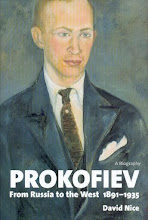Of course she takes to the camera like a duck to water; how could she not, after her early years as a model in Paris? But our dearest Sophie achieves a crowning glory as the Australian Broadcasting Company gives her over ten minutes' worth of guiding in its excellent Foreign Correspondent two-part documentary Mali - The Road to Timbuktu.
As readers of this blog will know - and, I repeat myself, Sophie's djennedjenno was the prompt - the latest and perhaps the most enduring of her multiple incarnations has been as hostess of her own specially mud-built hotel in the central Malian town of Djenné, a place of culture and history which as she points out in the film is a hundred times more beautiful than Timbuktu. There she is above with husband Keita snapped by the consummate - and ever-modest - Malick Sidibé when he came to Djenné.
The route taken by the film crew is the one formerly travelled by many visitors like ourselves, including the toughest leg by four-wheel drive across the Sahel and ferry across the river Niger to Timbuktu.
But circumstances are now, of course, very different. The French have essentially driven out the Islamic extremists but incursions remain; the night after this film crew left Timbuktu 11 people were killed in an attack on the hotel where the ABC folk had been staying. It hardly needs adding that the Al-Qaida affiliated insurgents' extreme brand of Islam is one nearly all Malian Muslims reject.
Ridicule is one answer: the film shows walls of Timbuktu shops in which the faces not only of humans but also of camels have been painted out. Malians, moderate and tolerant in their religious practices, simply can't understand it. The peaceful scene below was prayer time at Djenné Mosque during the religious festival of Tabaski, with which we happened to coincide on our Christmas visit.
I like documentary presenter Eric Campbell's good humour as well as his instinct for getting the right facts and talking to the right people. His cameraman, David Martin, captures much of the indestructible treasure of Mali as well as the horrible legacy of the recent past (some of that also featuring on surprising wartime footage). And let's not forget they were travelling at considerable risk, despite the armed guards. Anyway, they arrived safely back in Bamako, where the film ends with coverage of Sophie's 'surreal', once-postponed fashion show. Her chunk of Part One, which can be seen - I link once again - here, runs from 11'56 to 19'27.
You'll surely agree she comes over very well indeed, and the range of what she's done for Djenné is well represented, from the weaving to the invaluable work in the British Library-funded manuscript library. The upshot is good business for malimali.org from Australia, and certain proposals, she says, from several Sydney businessmen (Keita can see them off).
In the meantime I withdraw again from the Malian scene with a memory of one of the best stretches - a moment of post-dawn bliss on our two-day pinasse journey down the Niger from Timbuktu to Mopti. That's not an experience anyone will be repeating again in the foreseeable future.









